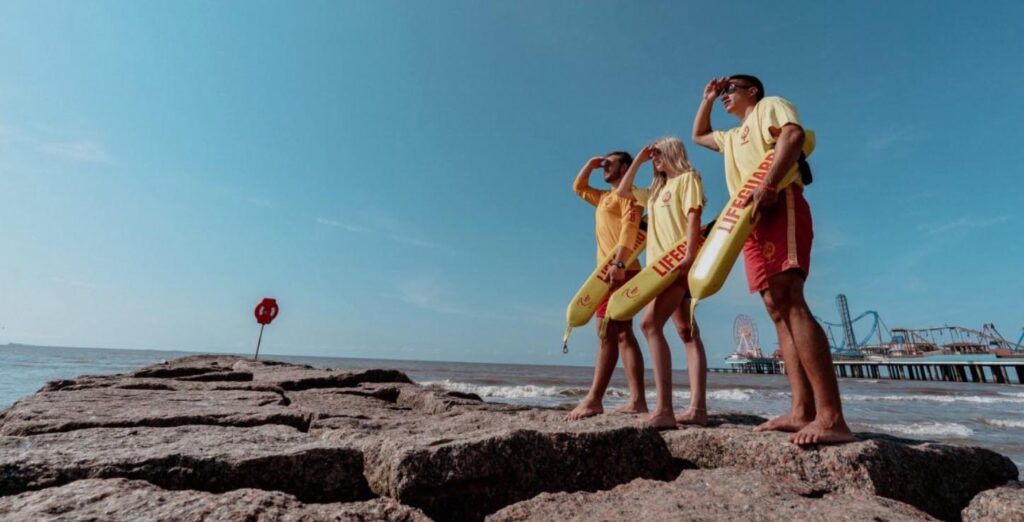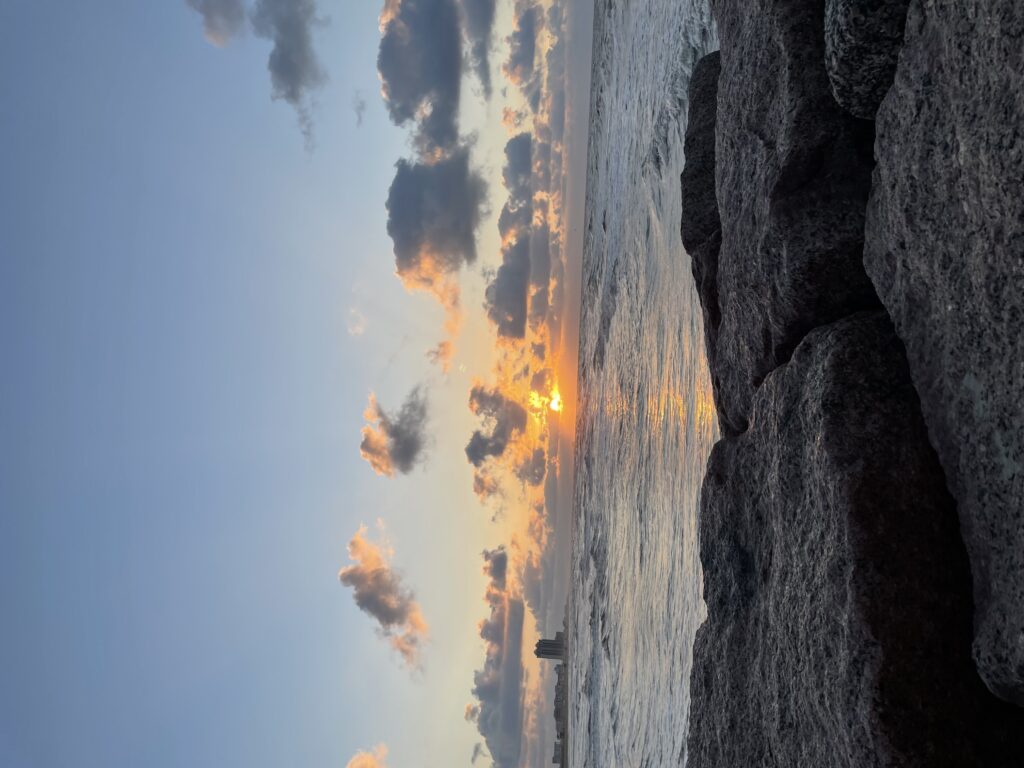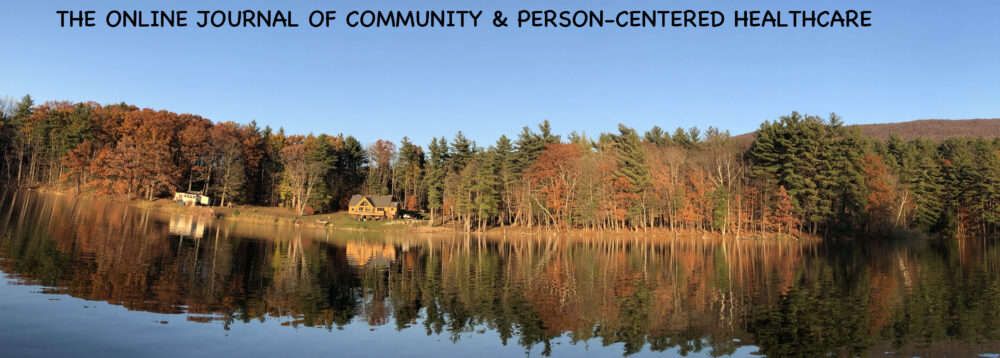Madelyn Schmidt, BS1, Nina Martins, BS1, Diana Bonilla, BS1, Melissa Marchan, BS1, Sylvia Jimenez, BS1, Richard F. Wagner Jr., MD2
1John Sealy School of Medicine, Galveston, Texas
2University of Texas Medical Branch, Department of Dermatology, Galveston, Texas
1John Sealy School of Medicine, Galveston, Texas
2University of Texas Medical Branch, Department of Dermatology, Galveston, Texas
Corresponding author: Madelyn Schmidt BS
Email: mlschmid@utmb.edu
Conflicts of interest disclosures: None
Key words: Medical Education, Sun Safety, Sun Protection, Skin Cancer, Dermatology.
Abstract: Madelyn Schmidt and her colleagues at the University of Texas Medical Branch’s Dermatology Interest Group (DID) with their mentor, Dr. Richard Wagner, worked with the Galveston Island Beach Patrol to educate lifeguards about sun safety. The DIG learned that a 10 minute skin protective educational training influenced Galveston lifeguards to improve their sun protective behaviors

Introduction: The sun is most intense is from 10 am to 4 pm, which is the time when most beachgoers and lifeguards are at the beach.1 The most effective method of diminishing the risk of developing skin cancer is to decrease the amount of ultraviolet radiation exposure.1 One study revealed that lifeguards receive more than 74% of ultraviolet radiation over the recommended threshold limits.2 Inadequate skin protective behaviors increase the risk of developing melanoma, that one person dies from every hour.3 This, it is important to increase awareness of skin cancer and provide education on how to prevent it for those most at risk. Community-based interventions increase awareness of skin cancer risk and willingness to participate in sun- protective practices.4 Lifeguards are exposed to excessive UV radiation, and it is unknown if interventional skin protective educational training can improve sun safe behaviors to decrease the risk of skin cancer. We hypothesized that the applicatio of skin protective behaviors would improve in Galveston lifeguards if they were provided sun safe educational training.
Methods: Lifeguards at the Galveston Island Beach Patrol were invited to participate in a survey series assessing their average sun exposure and use of skin protective behaviors (Figure 1). Participants completed the baseline survey, received a 10-minute educational training, and completed identical phone call follow-up surveys one week, one month, and two months following the training. Twenty-six Galveston lifeguards completed the first survey, ten completed the second survey, three completed the third survey, and one completed the fourth survey. The participant demographics comprised 24 men and two women, with 23 identifying as Hispanic and three as White, with an average age of twenty-five. Due to the low participation and survey completion rate, the amount of sun exposure and use of skin protective behaviors was compared between the baseline and one week follow-up survey responses only.
Results: Statistical analysis was performed using SAS 9.4 version5. The Wilcoxon Signed-Rank test was used to compare the average number of hours participants were outside without shade covering, the amount of SPF sunscreen regularly used, and the average number of days a sunburned was obtained (Table 1). Association between wearing protective clothing, using sunscreen, obtaining sunburns, and location of the sunburn was compared between the first and second survey using the Fisher’s Exact Test. There was a decrease in the number of sunburns obtained [number in first survey, number in second survey (p value)] on the nose 17, 2 (0.02), on the face 18, 2 (0.01), and on the back 17, 2 (0.02) (Table 2). The decrease in sunburns on the neck was also greatly reduced, but not statistically significant p=0.054. The Fitzpatrick Skin Type Scale was used to identify participant’s skin type (Table 2).
Conclusion: Administration of a 10 minute skin protective educational training influenced Galveston lifeguard use of sun protective behaviors as there was a significant decrease in the number of sunburns obtained on the nose, face, and back. The average amount of hours spent outside without shade covering greatly exceeds the minimum erythema dose based on the average Fitzpatrick Skin Type, demonstrating the need to utilize protective clothing and sunscreen in this population. The remaining results, though not significant, show an upward trend in the use of skin protective clothing and use of sunscreen, and a downward trend in the number of sunburns obtained following the implementation of the educational training. Our results suggest that a brief skin protective educational training can influence participation in sun protective behaviors by lifeguards. We recommend that further community-based interventional trainings be implemented.
References
- American Academy of Dermatology Association. (2022, April 22). Skin cancer. https://www.aad.org/media/stats-skin-cancer
- Gies P, Glanz K, O’Riordan D, Elliott T, Nehl E. Measured occupational solar UVR exposures of lifeguards in pool settings. Am J Ind Med. 2009 Aug;52(8):645-53. Doi: 10.1002/ajim.20722. PMID: 19572325; PMCID: PMC3728671.
- Skin Cancer Foundation. (2023, January). Skin Cancer Facts & Statistics. The Skin Cancer Foundation. https://www.skincancer.org/skin-cancer-information/skin-cancer-facts/
- Preda-Naumescu, A., Sowell, J., Weir, S., Srikakolapu, S., Patel, O., Aldana, I., Garcia, N., & Kole, L. (2023). Community Educational Interventions: An Effective Means to Improve Photoprotection and Skin Cancer Awareness in Outdoor Occupational Workers. SKIN The Journal of Cutaneous Medicine, 7(1), 616–620. https://doi.org/10.25251/skin.7.1.11.
- SAS Institute Inc. 2023. Cary, NC: SAS Institute Inc.
Figure 1

TABLE 1

Table 2

PRACTICE SAFE SUN AND ENJOY THE BEACH!

